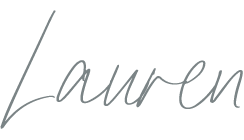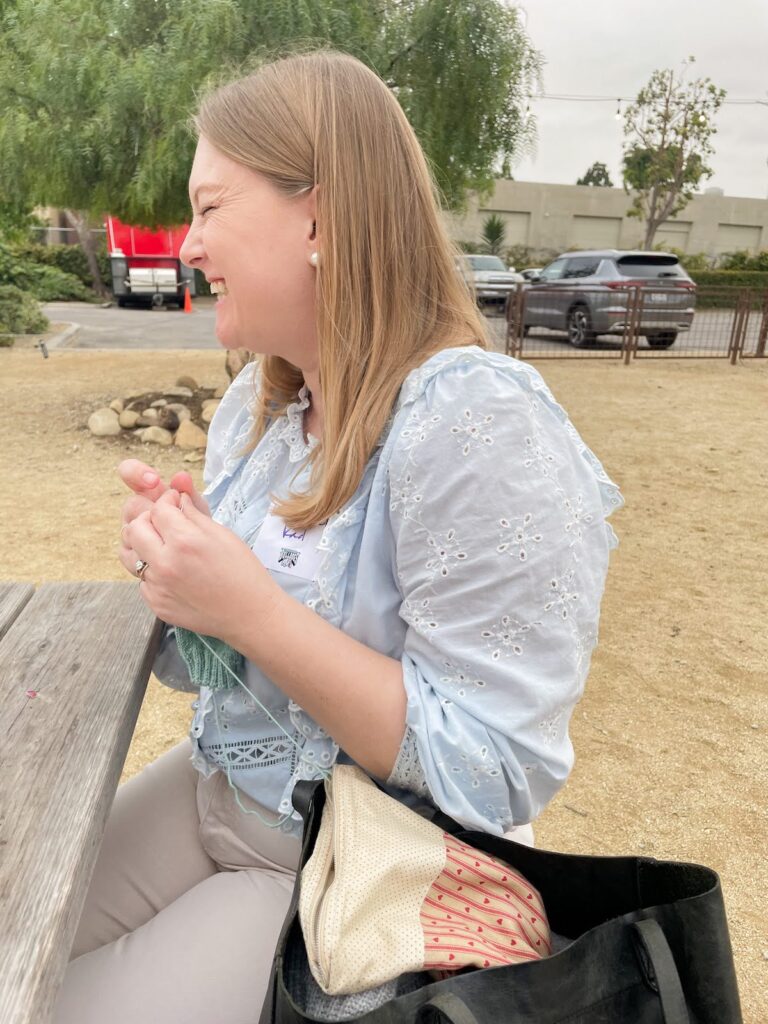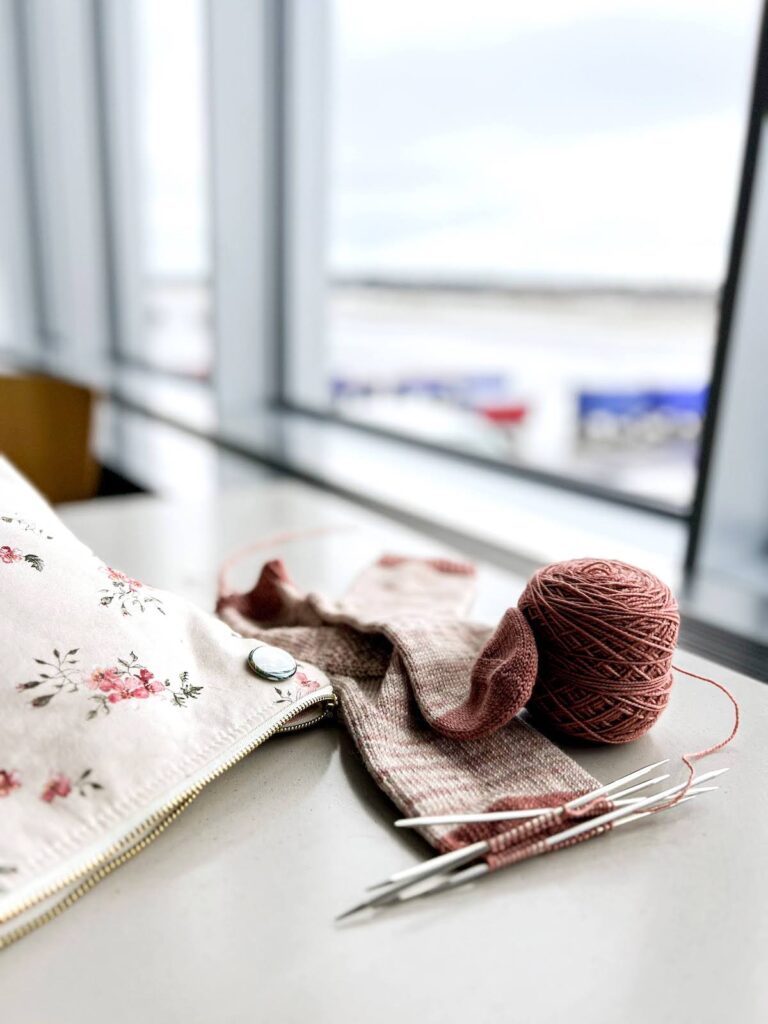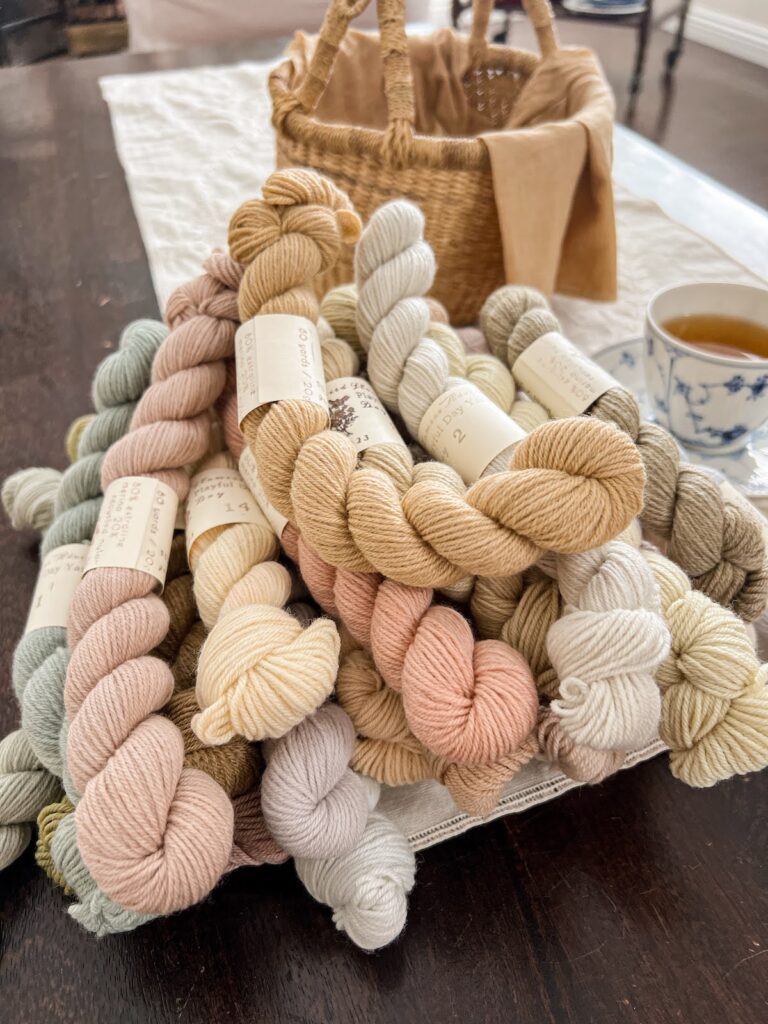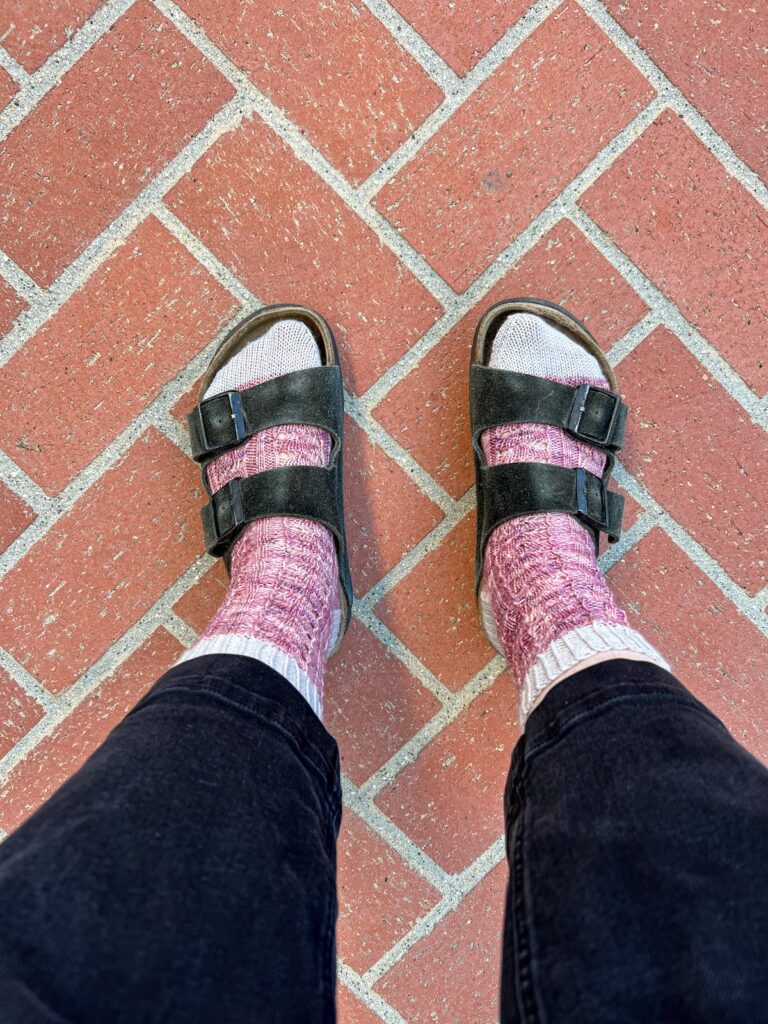Today, we’re taking a break from knitting to visit one of my favorite topics: needlepoint cushions. My grandma had some on the guest bed when I was a little girl. I spent a shocking amount of time looking up close at them, feeling the stitches, and smelling the wool. Ever since, they’ve occupied a special place in my heart.
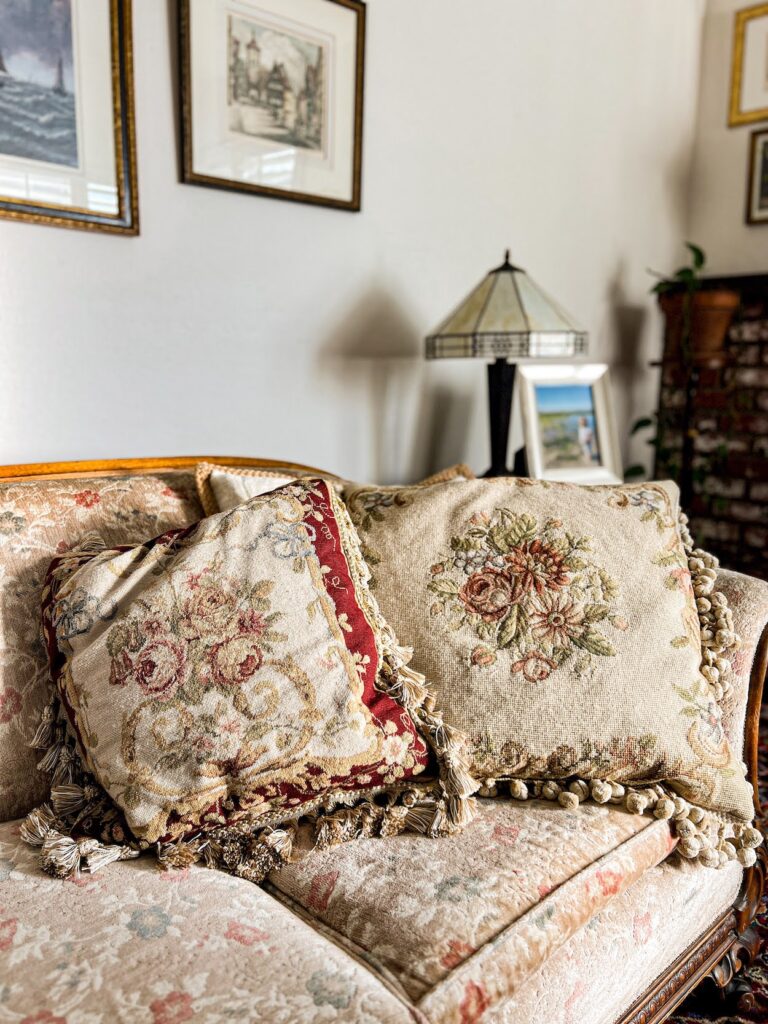
Then I grew up and started watching historical dramas. I realized the sets of many of my favorite shows had needlepoint cushions involved somehow. As a result, I spent years ogling the drawing room at Downton Abbey and the lush, Edwardian interiors of Gran Hotel (still, I think, the grande dame of Spanish historical dramas).
Finally, I decided I needed some of my own. I spent a lot of time doing research and digging around before I bought mine, and I figured I should share that knowledge so it doesn’t just sit in my head. In this post, we’ll talk about the history of these gorgeous cushions, why they’re so special, and how to find good ones.
Why I Love Needlepoint Cushions
Sofas are all well and good in their own right, but they can look kind of bare without some cushions. For me, my fondness for needlepoint cushions comes down to two key elements: the abundance of detail and their durability.
I love how needlepoint cushions have so many elements to them. Depending on the pattern you buy, cushions might feature embroidered flowers of all sorts, ribbons, scrollwork, animals, sailing ships, and heaven knows what else. Sometimes they have whimsical little sayings, and they’re often finished with fringe or poms around the edges. They’re visually engaging and have a delicious tactile element.
But they’re also more durable than your average cushion. This is because of their layers of wool or silk embroidery on a canvas backing. You have a sturdy fabric ground that is then reinforced by hundreds, even thousands, of tiny colorful stitches. This means that, even though they may look delicate, they actually fit well in a life of heavy use.
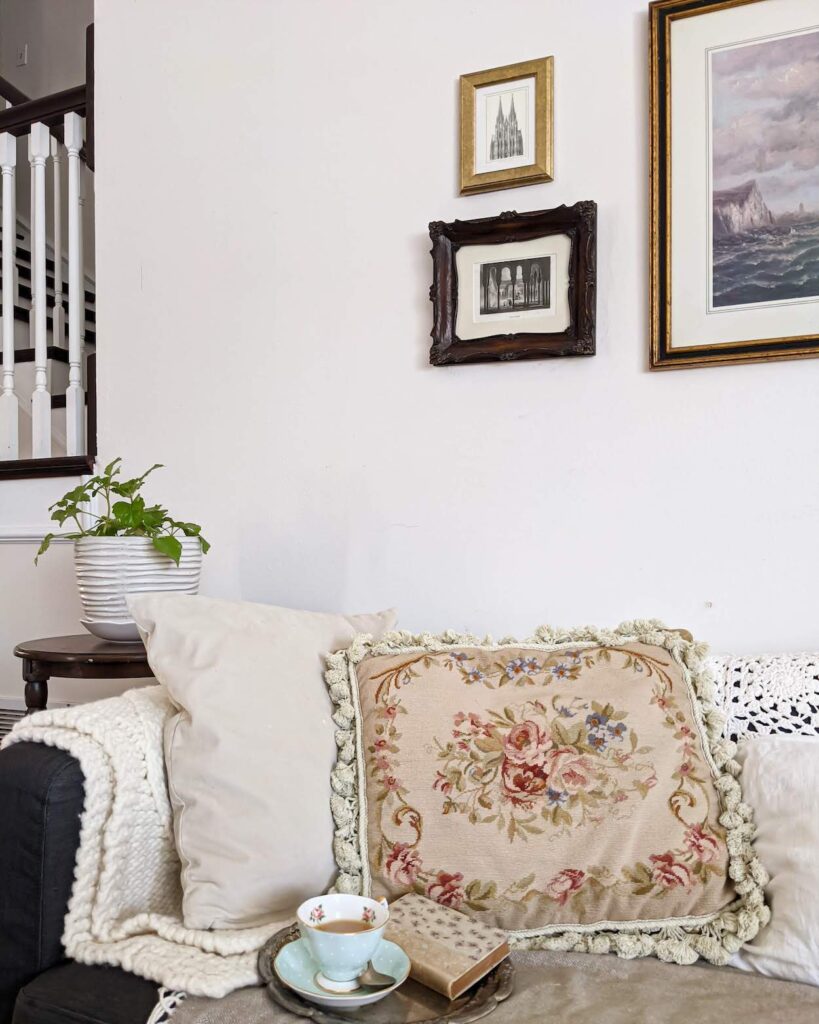
Other Names for Needlepoint Cushions
As with so many other things in the interior design world, needlepoint cushions have many other names. Sometimes people will use a slightly incorrect name to describe a needlepoint cushion. You might also be looking for something that is similar to a needlepoint cushion but isn’t quite the same thing.
To help you in your search process, here is a list of other search terms you might want to use when looking for just the right cushions for your home.
- Needlepoint pillows: pretty much any of the terms with “cushion” in them can have the term “pillow” swapped instead. Be sure to run searches for both terms.
- Tapestry cushions: a little internet sleuthing tells me that this term is more common in the UK. If you’re based there, or if you’re in another country but looking to source cushions from the UK, this can be a helpful bit of info.
- Petit point cushions: petit point refers specifically to the more delicate style of embroidery you’ll see on some of these cushions. Many of them will have gros point for the main field of the cushion (larger stitches with larger thread). Then the more delicate design in the middle of the cushion will be done in petit point (smaller stitches with smaller thread).
- Aubusson cushions: this search term is most likely to return cushions with soft pastel florals on a tan background, in keeping with the style of Aubusson tapestries and rugs that were popularized in 18th century France. Most of these cushions will not actually be made with Aubusson tapestry pieces. That would be very expensive, but you can certainly splurge on some antique versions if you’d like.
- Kilim cushions: this search term will usually get you cushions made from vintage kilim rugs. These aren’t technically needlepoint cushions but do have some characteristics in common with some of the bolder, more modern designs. Expect rich colors (especially deep reds and navy blues), strong geometric elements, and sturdy wool.
- Embroidered cushions: this search term will get you a lot of results that aren’t going to be what you’re looking for. On the other hand, it can also be helpful if you’re looking on somewhere like Craigslist or Facebook Marketplace, where people often don’t exactly know how to describe what it is they’re selling. This can be an excellent way to get a good deal on a cushion that would be more expensive from a vendor who knew more about what they were selling. I’ve written a whole blog post on using those platforms effectively.

How to Find Beautiful Needlepoint Cushions
I’ve sourced most of my cushions via the internet, but you don’t necessarily have to do so. Here are the four most common ways to find good needlepoint cushions for your home.
Vintage and Antique Shops. These are great sources for all sorts of treasures, and needlepoint cushions are no exception. Be sure to check for the quality of the needlepoint, especially whether any of the stitches are coming loose or have snagged. Be on the lookout for signs of moth damage, too. That can look like some of the threads starting fray or little bald spots where the canvas is showing through. Make sure to give the cushion a good sniff, too.- Online Marketplaces. I’ve had great luck buying my cushions on Etsy, but there are also lots of sellers on eBay and Facebook Marketplace, too. If you’re looking for antique cushions, be sure to check out 1st Dibs and Chairish. If you’re really going to splurge, well, Sotheby’s and Bonhams both have online auctions on a regular basis. With all of these sources, beware of listings that don’t have detail photos, full-item photos, and measurements/materials provided. Remember, if it seems to good to be true, it probably is.
- Thrift Shops and Estate Sales. Grandmillennial design is having a moment not just because it’s comforting, but because many of us have realized it’s less expensive to decorate with grandma’s hand-me-downs. If your grandma doesn’t have some cushions, though, odds are good somebody else’s grandma just might, and their grandkids might not want those cushions. You can often find needlepoint cushions donated to thrift stores or offered as part of estate sales.
- Stitching Your Own. If you’re feeling crafty, you can absolutely make your own needlepoint cushions. One of the most popular ways to make your own needlepoint cushion is to buy a kit. You can also work from charts you’ve found online (there are free and paid versions on lots of websites). The one drawback is that you’ll need to be comfortable sewing on the fabric backing, or if not, you’ll need to have access to somebody who is. The upside is that you’ll have a soothing project to work on when you’re stressed and a fun conversation piece when you’re done. Making your own cushions can also give you a greater range of design styles.
An Easily Shoppable Gallery for You
Because I am an incurable magpie, I love curating collections of things I think are pretty. I’ve been bookmarking pretty cushions for ages now. Unfortunately, there is absolutely no way I can fit all of these in my home (nor can I really justify the expense of this many cushions).
My loss is your gain. Here’s an easily shoppable gallery of new and vintage cushions. These are affiliate links, which means if you choose to buy something through those links, I’ll receive a small commission at no extra cost to you. I will always identify affiliate links for you. Thanks for supporting my work!
Let’s stay connected!
Join my newsletter for 30% off all new releases, regular updates with helpful tips and tricks, first crack at registration for upcoming workshops, exclusive discounts, and more.
Join the A Bee In The Bonnet Facebook Group to participate in knitalongs and other fun community events
Come hang out with me on the A Bee In The Bonnet TikTok
Follow along on the A Bee In The Bonnet Instagram
Get inspired via the A Bee In The Bonnet Pinterest
